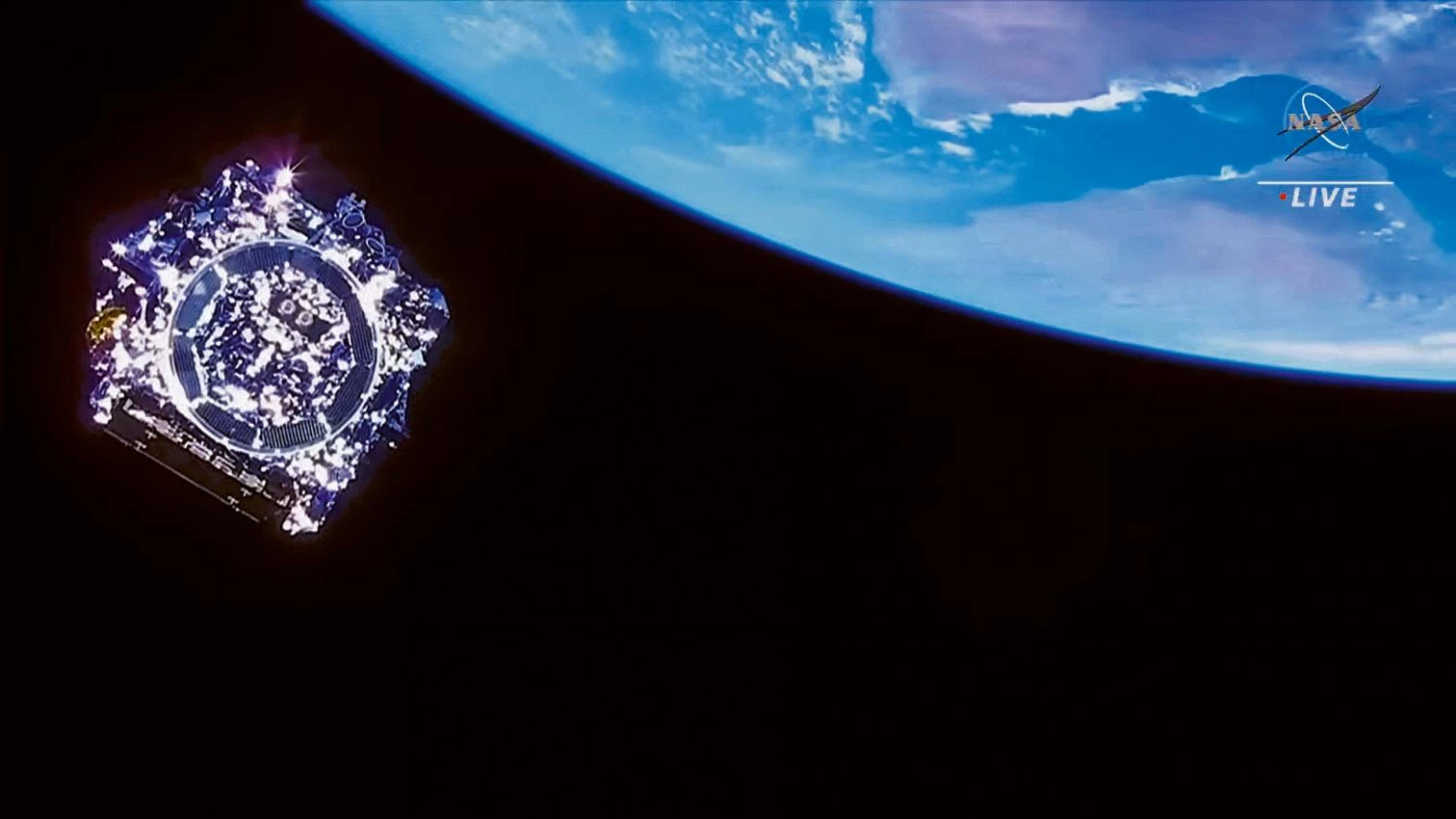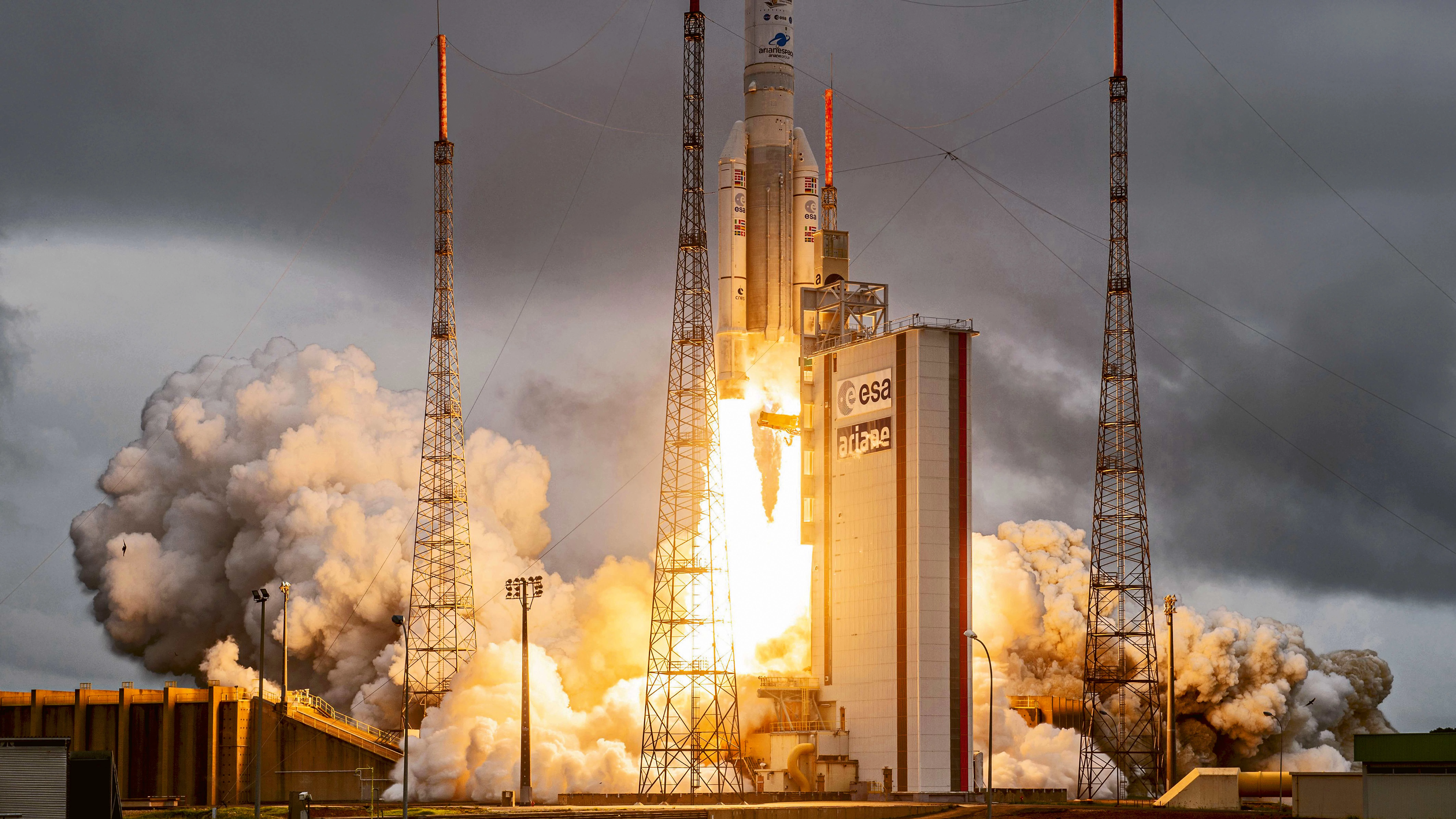
Launch of the James Webb Space Telescope
If the 2020 Christmas gift were the vaccines, a year later science invites us on a journey to the origin of the universe. On 25 December 2021, the James Webb telescope started a journey that will take it 3.5 million kilometers from Earth, from where it will observe the most ancient galaxies receiving the light they emitted over 13,000 million years ago. The space telescope, a joint project of the United States, Europe, and Canada, slated for 2007 with a cost of 1,000 million dollars, has been launched with great delay and a cost ten times higher, but the technical complexity of the deployment of the sun shield and mirror panels that form the telescope – which will be finally located in a place so remote that it cannot be repaired by astronauts, as was the case with its predecessor, the Hubble – explains the delays and overruns of the project, which will initially explore the atmosphere of the exoplanets and hopes to enrich our knowledge of the cosmos capturing later the first light of the universe.
When the space race seemed to be led by private companies like Virgin Galactic of Richard Branson (who ten years ago opened in New Mexico Norman Foster’s Spaceport America), Blue Origin of Jeff Bezos and, above all, SpaceX of Elon Musk – who collaborates with NASA with his Starship and Falcon 9 rockets or programs like Artemisa for a moonbase –, it is stimulating to see government agencies launching scientific ventures that go beyond communication satellites, space tourism, or asteroid mining. The return to the Moon or the Mars missions – unmanned for now, with the rovers Curiosity since 2012 and Perseverance since 2020, and which have inspired several designs for lunar habitations – are related both to research and the exploitation of resources, and perhaps only the missions to Venus announced for the next decade – NASA’s DAVINCI+ and VERITAS and ESA’s EnVision – share with the James Webb an eminently scientific character.
Indeed, competition in outer space of public agencies and private companies calls for governance of the cosmos, non-existent for now. Perhaps as in the Arctic or the Antarctic, territorial claims and scientific stations are entangled in a web that makes the geopolitics of power inseparable from the search for knowledge. Just cleaning up orbital debris – with 34.000 objects of more than 10 cm and almost a million of more than 1 cm – seems to be a huge undertaking, bearing in mind the several thousands of satellites to be launched in the coming years and the accusations hurled between the US and China with every incident in space, be it the free fall of debris from Chinese spacecrafts or the collision risk of SpaceX’s Starlink satellites with Tiangong Space Station. While we think about how to remove space junk and regulate the 100,000 satellites that could be in orbit by the end of this decade, the James Webb telescope will invite us to keep looking up with admiration and awe towards the depth of time.

James Webb separates from Ariane 5 rocket






